I have dataframe nodes with the group information like below:
dput(nodes)
structure(list(id = c("AC006329.1", "AC027796.4", "AC111170.2",
"AC111170.3", "AC138207.4", "AP000695.2", "CDK15", "COL14A1",
"COL15A1", "DDX11-AS1", "FOXP4-AS1", "IFNG-AS1", "ITGB2-AS1",
"LINC00944", "LINC01213", "LINC01395", "MIR155HG", "MSTRG.108144",
"MSTRG.110466", "MSTRG.11483", "MSTRG.130624", "MSTRG.134576",
"MSTRG.147129", "MSTRG.180740", "MSTRG.180762", "MSTRG.24184",
"MSTRG.9061", "SERHL"), label = c("AC006329.1", "AC027796.4",
"AC111170.2", "AC111170.3", "AC138207.4", "AP000695.2", "CDK15",
"COL14A1", "COL15A1", "DDX11-AS1", "FOXP4-AS1", "IFNG-AS1", "ITGB2-AS1",
"LINC00944", "LINC01213", "LINC01395", "MIR155HG", "MSTRG.108144",
"MSTRG.110466", "MSTRG.11483", "MSTRG.130624", "MSTRG.134576",
"MSTRG.147129", "MSTRG.180740", "MSTRG.180762", "MSTRG.24184",
"MSTRG.9061", "SERHL"), group = structure(c(1L, 6L, 6L, 6L, 4L,
3L, 4L, 4L, 4L, 1L, 1L, 2L, 2L, 2L, 5L, 5L, 2L, 4L, 2L, 1L, 6L,
5L, 5L, 3L, 3L, 3L, 1L, 5L), levels = c("blue", "brown", "cyan",
"green", "purple", "red"), class = "factor")), row.names = c(NA,
-28L), class = "data.frame")
And the edges look like below:
here is the edges.csv file
Using nodes and edges I used the below code to create the network plot:
When I used like below, the network plot was constantly moving and doesn't stop at all.
visNetwork(nodes, edges)
I also tried adding visPhysics(stabilization = FALSE) to above line, but didn't work.
So, I tried like below with igraph layout:
visNetwork(nodes, edges) %>%
visIgraphLayout()
This doesn't keep the nodes from same group together. Can anyone please tell me how to keep the nodes from same group / color together?
It should look like below:




